Saint Patrick’s Day, or the Feast of Saint Patrick (Irish: Lá Fhéile Pádraig, “the Day of the Festival of Patrick”), is a cultural and religious celebration held on March 17, the traditional death date of Saint Patrick (c. AD 385–461), the foremost patron saint of Ireland

Saint Patrick’s Day was made an official Christian feast day in the early 17th century and is observed by the Catholic Church, the Anglican Communion, the Eastern Orthodox Church, and the Lutheran Church. The day commemorates Saint Patrick and the arrival of Christianity in Ireland, and celebrates the heritage and culture of the Irish in general. Celebrations generally involve public parades and festivals, céilís, and the wearing of green attire or shamrocks

Saint Patrick’s Day is a public holiday in the Republic of Ireland, Northern Ireland, and in some Canadian provinces. It is also widely celebrated in the United Kingdom, Canada, United States, Brazil, Argentina, Australia and New Zealand, especially amongst Irish diaspora.
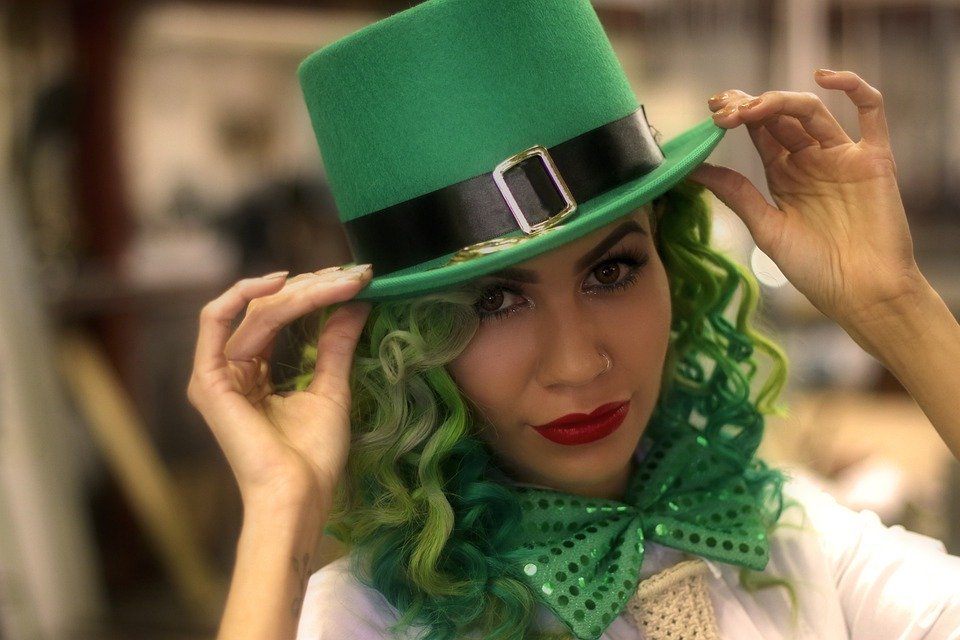
Saint Patrick’s Day is celebrated in more countries than any other national festival. Modern celebrations have been greatly influenced by those of the Irish diaspora, particularly those that developed in North America.
On St Patrick’s Day, it is customary to wear shamrocks, green clothing or green accessories. St Patrick is said to have used the shamrock, a three-leaved plant, to explain the Holy Trinity to the pagan Irish.
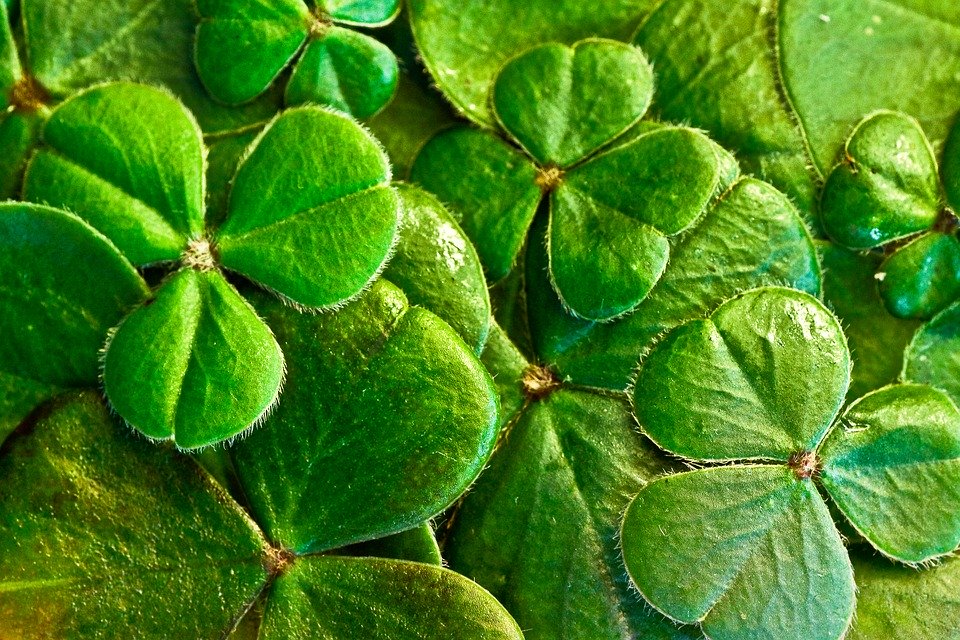
This story first appears in writing in 1726, though it may be older. In pagan Ireland, three was a significant number and the Irish had many triple deities, a fact that may have aided St Patrick in his evangelisation efforts
The first association of the colour green with Ireland is from the 11th century pseudo-historical book Lebor Gabála Érenn (The Book of the Taking of Ireland), which forms part of the Mythological Cycle in Irish Mythology and describes the story of Goídel Glas who is credited as the eponymous ancestor of the Gaels and creator of the Goidelic languages (Irish, Scottish Gaelic, Manx)

The colour green was further associated with Ireland from the 1640s, when the green harp flag was used by the Irish Catholic Confederation. Green ribbons and shamrocks have been worn on St Patrick’s Day since at least the 1680s.
During the 1790s, green would become associated with Irish nationalism, due to its use by the United Irishmen. This was a republican organisation—led mostly by Protestants but with many Catholic members—who launched a rebellion in 1798 against British rule. The phrase “wearing of the green” comes from a song of the same name, which laments United Irishmen supporters being persecuted for wearing green.
The late nineteenth and early twentieth centuries have seen the re-emergence of Irish cultural symbols, such as the Irish Language, Irish mythology, and the colour green, through the Gaelic Revival and the Irish Literary Revival which served to stir Irish nationalist sentiment.
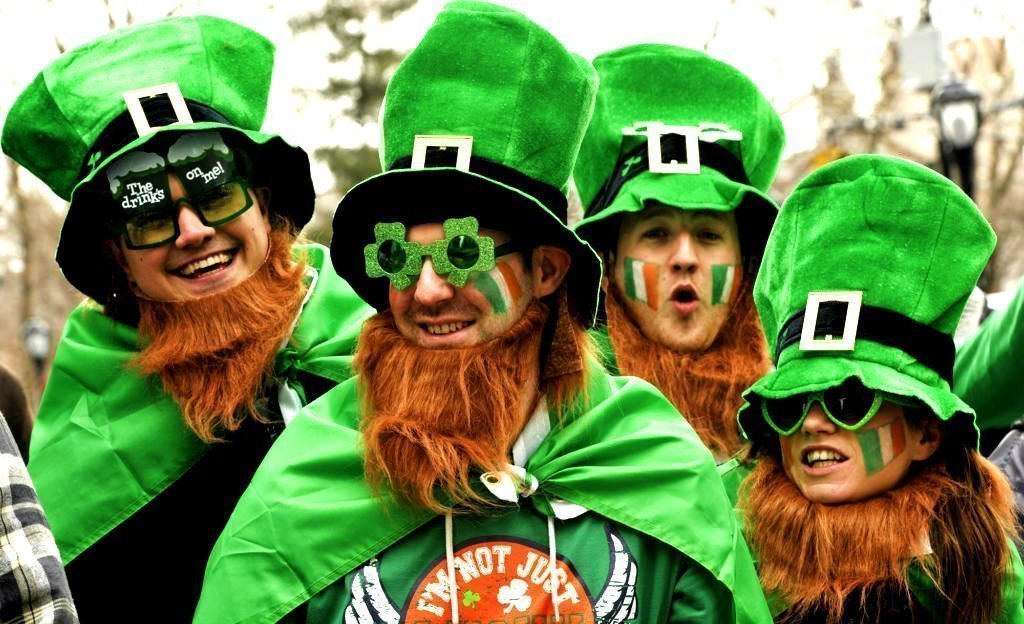
The influence of green was more prominently observable in the flags of the 1916 Easter Rising such as the Sunburst flag, the Starry Plough Banner, and the Proclamation Flag of the Irish Republic which was flown over the General Post Office, Dublin together with the Irish Tricolour. Throughout these centuries, the colour green and its association with St Patrick’s Day grew.
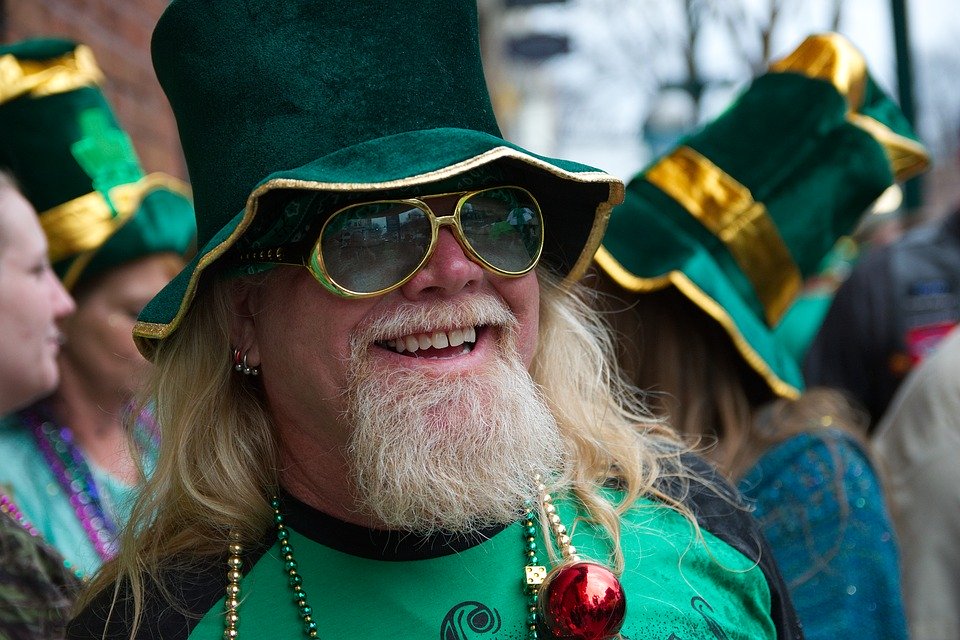
Saint Patrick’s feast day, as a kind of national day, was already being celebrated by the Irish in Europe in the ninth and tenth centuries. In later times, he became more and more widely seen as the patron of Ireland.
Saint Patrick’s feast day was finally placed on the universal liturgical calendar in the Catholic Church due to the influence of Waterford-born Franciscan scholar Luke Wadding in the early 1600s.
In 1903, St Patrick’s Day became an official public holiday in Ireland. This was thanks to the Bank Holiday (Ireland) Act 1903, an act of the United Kingdom Parliament introduced by Irish Member of Parliament James O’Mara.
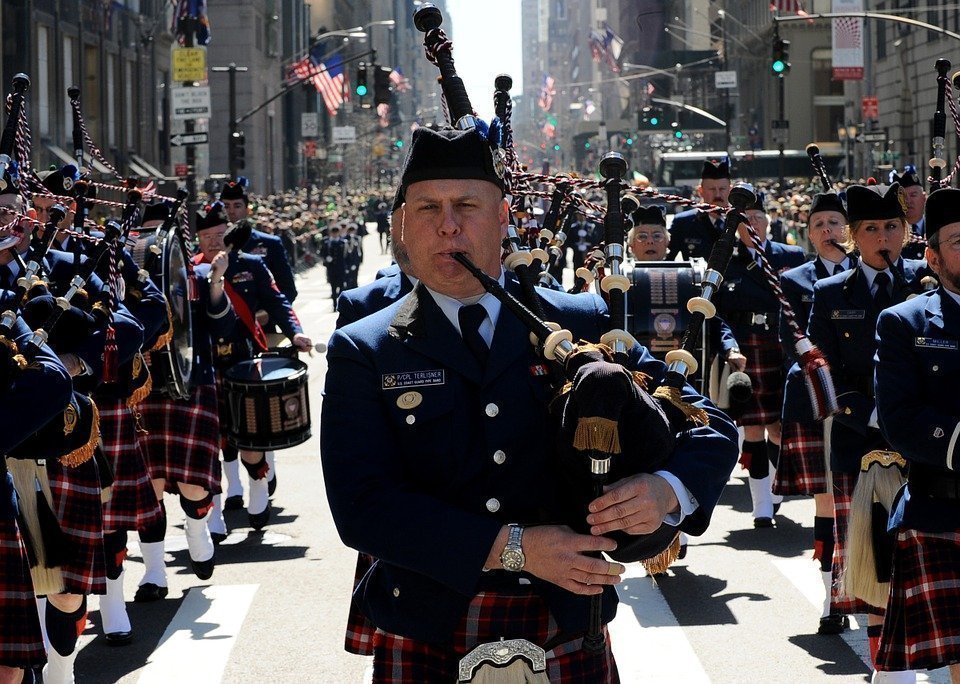
In the mid-1990s the government of the Republic of Ireland began a campaign to use St Patrick’s Day to showcase Ireland and its culture. The government set up a group called St Patrick’s Festival, with the aims:
- To offer a national festival that ranks amongst all of the greatest celebrations in the world
- To create energy and excitement throughout Ireland via innovation, creativity, grassroots involvement, and marketing activity
- To provide the opportunity and motivation for people of Irish descent (and those who sometimes wish they were Irish) to attend and join in the imaginative and expressive celebrations
- To project, internationally, an accurate image of Ireland as a creative, professional and sophisticated country with wide appeal.
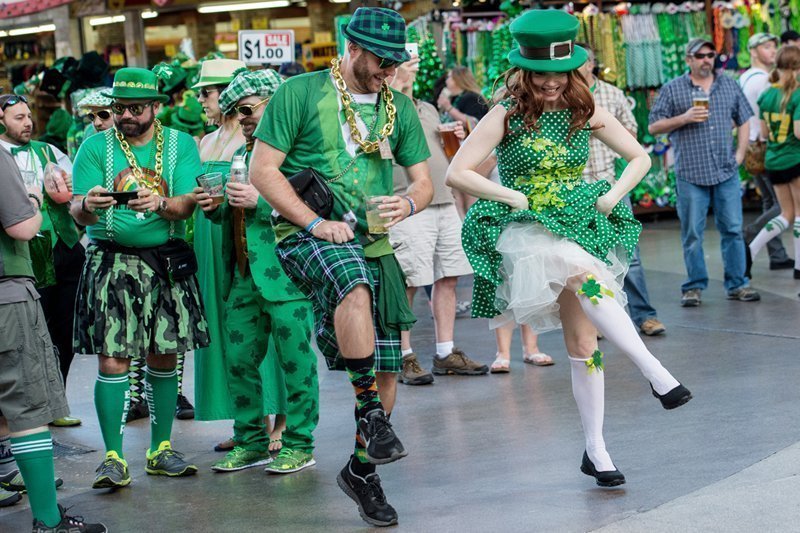
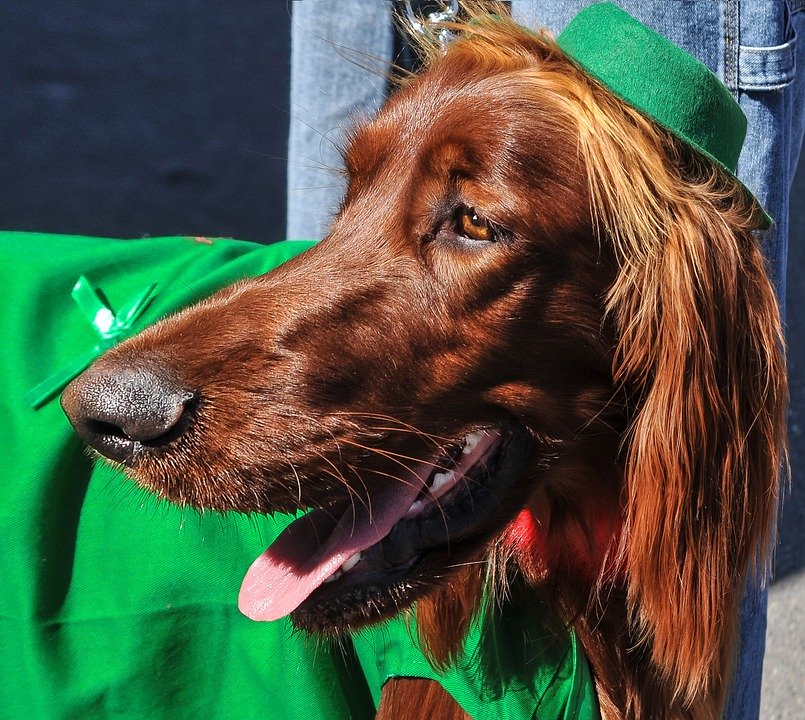
The first St Patrick’s Festival was held on 17 March 1996. In 1997, it became a three-day event, and by 2000 it was a four-day event.
By 2006, the festival was five days long; more than 675,000 people attended the 2009 parade. Overall 2009’s five-day festival saw almost 1 million visitors, who took part in festivities that included concerts, outdoor theatre performances, and fireworks. The Skyfest which ran from 2006 to 2012 formed the centrepiece of the St Patrick’s festival.
In 2018 and 2019 the municipality building of Nicosia was lighted green on St. Patrick’s day as part of the global celebrations.
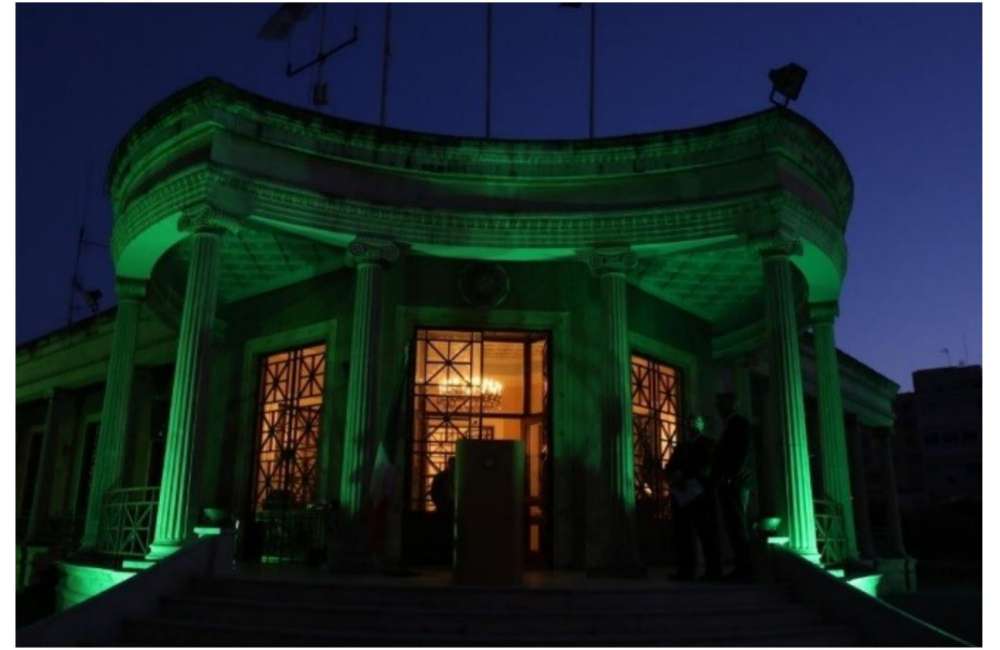
The “Greening” is part of Tourism Ireland’s Global Greening Initiative with around 300 iconic landmarks and sites in 50 different countries lighting up green. The initiative first began in 2010 in Sydney and Auckland and has gone from strength to strength each year since then. In 2018, Nicosia’s city hall was one of 304 monuments in the world that were lighted green.
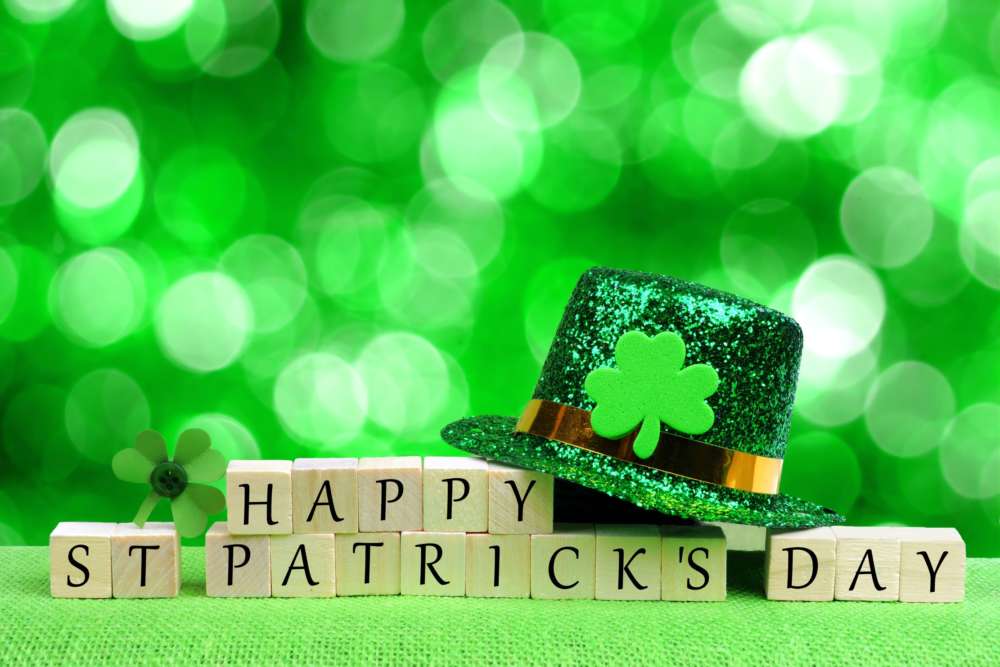
Happy St. Patrick’s day to all our readers who celebrate!
Lá fhéile Pádraig sona dhuit!







